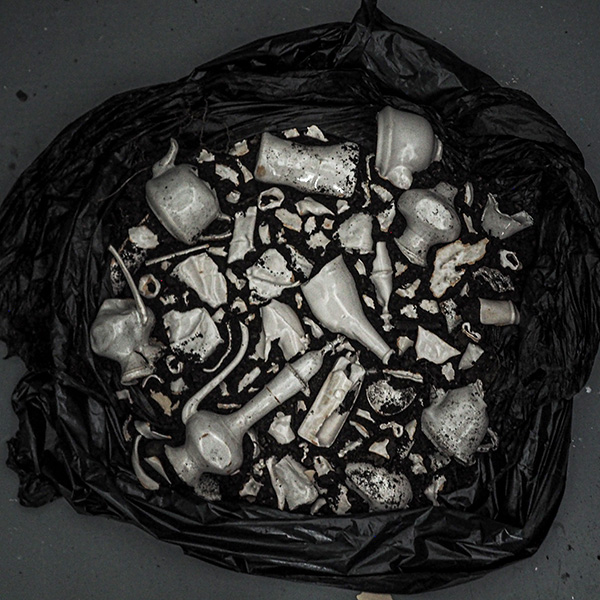This is for all the conversations that want to be said, but are too difficult to be spoken. All around the world, in every society, at some point, people will sit together and sip on a drink. Discussions and connections are made with a drink in hand, as lubrication for the passage of thoughts to the world. Humans are vessels for thoughts, but sometimes the vessels are broken and the words are too jagged to be spoken.
Amelia Recci has found life confusing. Talking helps reduce this, her practice aims to create a dialogue, a starting point of intrigue for the audience to engage with and turn to find someone to start a discussion with. The artist aims to facilitate conversations. Conversations, communication between humans with one another can be life-changing. No matter what culture, we all need to engage our thoughts with another thought.
The artist is interested in the organic nature of clay, once pulled from the earth it can then be molded, twisted and turned by hands into an object of desire or need. Utilising a slip-casted process, the objects here , not only represent aids of communication, but also how mankind is born into an expected mold of a person. The different types of objects can be seen to represent different stages of life, the artist is particularly interested in how twisted meanings become in culture, Tea is an icon of British-ness. However you may also be wise to note a simple ‘cuppa’ is more an emblem for British colonisations. The drink itself originates from China, which quickly hooked the Victorian English public. Establishing strong trade connections with the UK and Hong Kong (the only port the English could trade from), disagreements over the English traders pushing opium onto their lands to gain enough funds to cover a huge tea debt , a banning of trading then resolved by Hong Kong becoming English territory.
Does your cuppa still feel so warm and comforting?
Placing the objects in a bin bag reveals how ‘trash’ these conversations can become, how they can be avoided to maintain comfortability. Here is a space to break free of that comfortability, asking you the audience to participate, and complete the work with your voice.

“What can you see? What do you want to say? Do your thoughts flow freely? Has the whitewashing of history smothered or confused your voice? Is the soil beneath your feet different to the soil in front of you? Different to all the other soil covering our world? Who has the right to walk on this ground, does anyone?”

